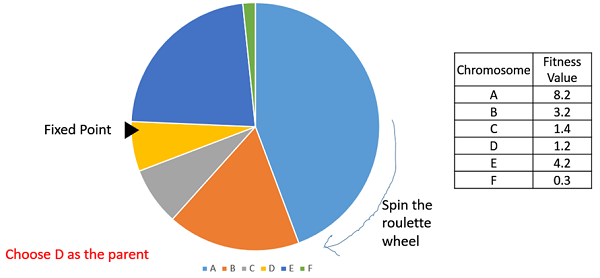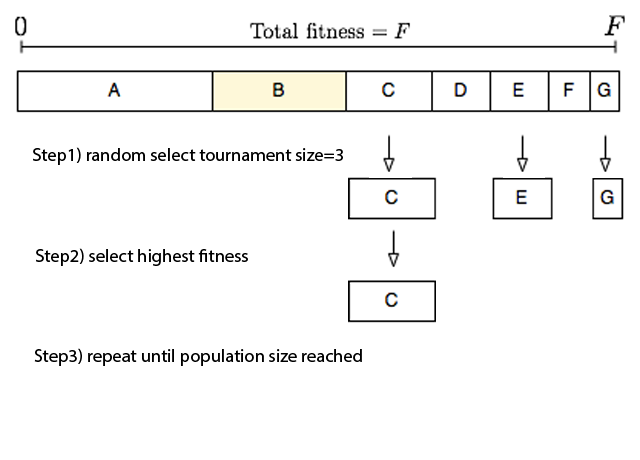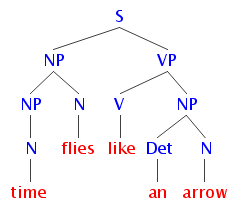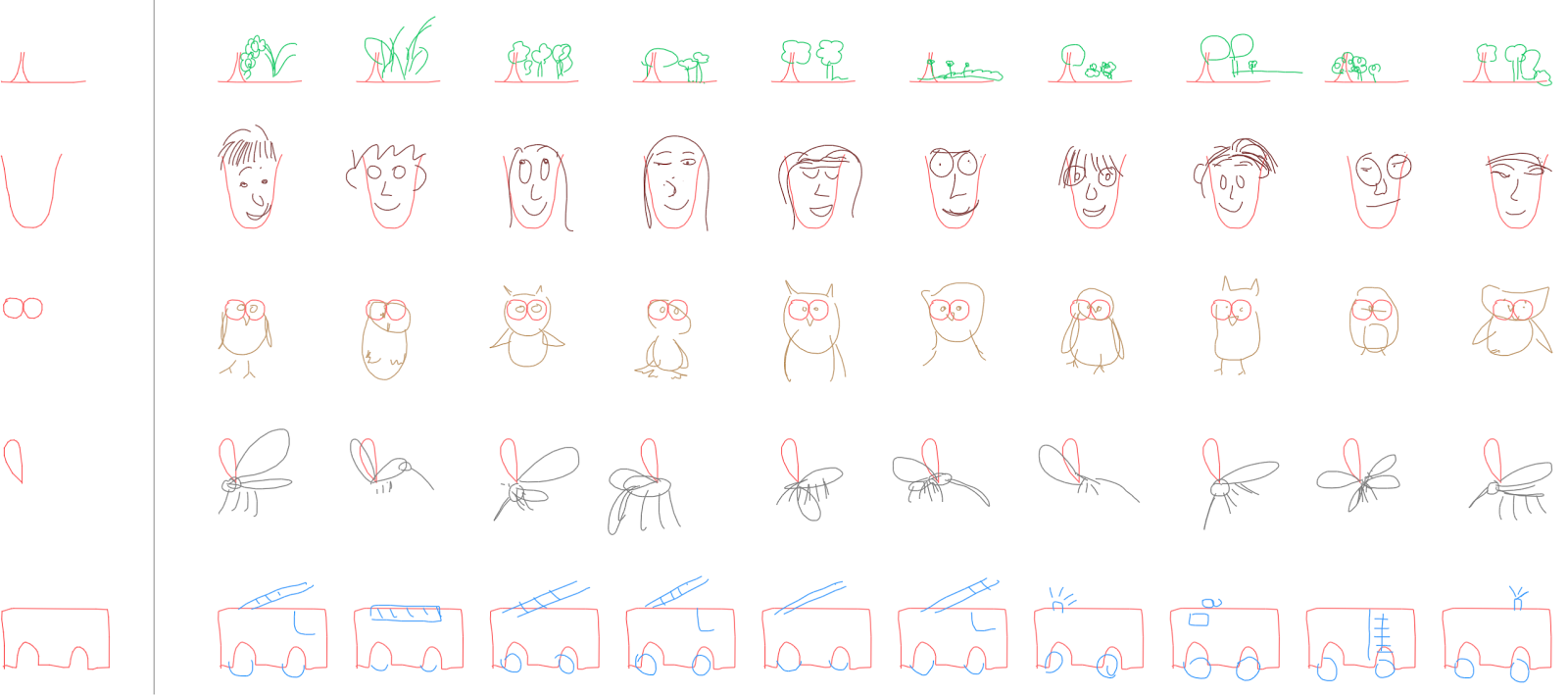Introduction to Genetic Algorithms
Bethesda AI Meetup, Sep 2019
Sections
- The Inspiration from Nature
- Genetic Algorithms
- Grammatical Evolution on Genolve.com
- Why Genolve is Moving to Deep Neural Nets
The Inspiration from Nature
- Evolution is nature's search algorithm
- Nature is searching for the fittest individual for a given environment
"Owing to this struggle for life, any variation, however slight and from whatever cause proceeding, if it be in any degree profitable to an individual of any species, in its infinitely complex relations to other organic beings and to external nature, will tend to the preservation of that individual, and will generally be inherited by its offspring "It was Herbert Spencer who coined the term "survival of the fittest"
- Charles Darwin
Crossing Over

In meiosis I chromosomes duplicate exchanging genetic information
[photo Simplified Biology]
New Gamete Cells
Mutations can occur during meiosis or during gene expression
[photo By Rdbickel]
CENTRAL DOGMA
- DNA ⇒
- RNA ⇒
- Proteins ⇒
- Phenoype
[photo Bozeman Science]
Genetic Algorithms
Genetic Algorithms solve optimization and search problems by representing a solution space as a chromosome and using simulated evolution to find the 'fittest' individual a.k.a. the solution to the problem.
The Algorithm
{ Evaluate fitness
Select parents
Crossover & mutate
} Repeat ↺
Input: PopSize, Pcross, Pmutate, SelectAlg
Output: BestScore
Population = InitializePopulation(PopSize)
EvaluatePopulation(Population)
BestScore = Generations = 0
While (!StopCondition(BestScore,Generations,...))
Parents = SelectParents(Population, SelectAlg)
Children = none
For (parent1,parent2 in Parents)
child1,child2 = Crossover(parent1, parent2, Pcross)
Children += Mutate(child1, Pmutate)
Children += Mutate(child2, Pmutate)
End
EvaluatePopulation(Children)
BestScore = GetBestSolution(Children)
Population = Replace(Population, Children)
Generations += 1
End
Return (BestScore)Roulette Wheel Selection

Tournament Selection

Chromosome Representation
- Bit-string representations of integers (Gray coding)
- Each parameter represented as an integer or float
- Bit-string for T/F
- Permutation
- Integers as indexes to other data structures
Crossover
Single-point crossover or multi-point by Pcross
Mutation randomly changes genes by Pmutate
[image By R0oland]
Demo: Knapsack Problem
Fill a Halloweeen shopping bag w/ scary items
[image Wikimedia]
Halloween Decorations $20 Budget
| Item | Scariness | Cost | Scare/$ |
|---|---|---|---|
| Ghost | 11.00 | $5.00 | 2.2 |
| Bat | 13.00 | $7.00 | 1.9 |
| Skull | 10.00 | $5.00 | 2.0 |
| Jackolantern | 20.00 | $10.00 | 2.0 |
| Witch mask | 5.00 | $3.00 | 1.7 |
| Goblin mask | 10.00 | $3.00 | 3.3 |
| Trump mask | 15.00 | $3.00 | 5.0 |
Chromosome Representation?
- Hint: What is the solution space?
- Bit-string is sufficient
- Bit 0 - buy the Ghost
- Bit 1 - buy the Bat
- 1011001
- Will crossover work?
next: fitness function?
Fitness Function
Gene.prototype.calcFitness = function() {
var selectedItems = items.filter(getItem);
this.fitness = selectedItems.reduce(sumPoints, 0);
this.totalCost = selectedItems.reduce(sumCost, 0);
//set penalty if totalCost > costlimit
if (this.totalCost > costlimit) {
this.fitness -= Math.pow(costlimit - this.totalCost,2);
this.fitness = Math.min(this.fitness,population.bestFitnessSoFar-1);
if(this.fitness<0)
this.fitness=0;
}
}The best solution is 51 scare points
Further Reading
Goldberg's classic text is still a valuable resource for the Genetic Algorithm [Goldberg1989], and Holland's text is interesting for those looking to learn about the research into adaptive systems that became the Genetic Algorithm [Holland1975]. Additionally, the seminal work by Koza should be considered for those interested in Genetic Programming [Koza1992], and Schwefel's seminal work should be considered for those with an interest in Evolution Strategies [Schwefel1981]. For an in-depth review of the history of research into the use of simulated evolutionary processed for problem solving, see Fogel [Fogel1998] For a rounded and modern review of the field of Evolutionary Computation, Bäck, Fogel, and Michalewicz's two volumes of "Evolutionary Computation" are an excellent resource covering the major techniques, theory, and application specific concerns [Baeck2000] [Baeck2000a]. For some additional modern books on the unified field of Evolutionary Computation and Evolutionary Algorithms, see De Jong [Jong2006], a recent edition of Fogel [Fogel1995], and Eiben and Smith [Eiben2003].
[from Clever Algorithms]Grammatical Evolution on Genolve.com
Generate + Evolve
Genolve
What Does Genolve Do?
Basic concepts
Make a blog graphic
(try clicking the 'geometric' button then click a design on the right)
English Grammar
Time flies like an arrow

NP : Determiner + Pre-modifiers + NOUN + Postmodifiers/Complement
Grammars are Everywhere
- Extensible Markup Language (XML)
- XSD (XML Schema Definition) is basically a grammar
- BeerXML is a thing
- HTML
- SVG
- Programming languages
Context Free Grammars
Backus Normal Form (BNF)
<postal-address> ::= <name-part> <street-address> <zip-part>
<name-part> ::= <personal-part> <last-name> <opt-suffix-part> <EOL>
| <personal-part> <name-part>
<personal-part> ::= <letter> "." | <first-name>
<street-address> ::= <house-num> <street-name> <opt-apt-num> <EOL>
<zip-part> ::= <town-name> "," <state-code> <ZIP-code> <EOL>
<opt-suffix-part> ::= "Sr." | "Jr." | <roman-numeral> | ""
<opt-apt-num> ::= <apt-num> | ""
<first-name> ::= <word>
<word> ::= <letter><word> | <letter>
<letter> ::= "a"|"b"|"c"|"d"|"e"|"f"|"g"|"h"|"i"|"j"|"k"|"l"|"m"|"n"|"o"|"p"|"q"|"r"|"s"|"t"|"u"|"v"|"w"|"x"|"y"|"z"[from Wikipedia]
Programming Grammar
To solve the Sante Fe Ant Trail
<prog> ::= <code>
<code> ::= <line> | <code> <line>
<line> ::= <condition>'\n' | <op>'\n'
<condition> ::= 'if(food_ahead()==1) {' <opcode> '} else {' <opcode> '}'
<op> ::= 'left();' | 'right();' | 'move();'
<opcode> ::= <op> | <opcode> <op>[from GEVA]
The Genolve Grammar
Weighted Extended Backus Normal Form (EBNF) of over 2000 lines models the full SVG specification.
- ^nn - weight rule by nn percent
- ?nn - optionally include 0 or 1 times
- *nn - repeat 0 or more times
- +nn - repeat 1 or more times
Timecount_list : Timecount_val ( '; ' Timecount_val )*5;
Timecount_val : float_datatype (Metric)?20;
Metric : 's'^80 |'min'^10 | 'h'^5 | 'ms'^5;Demo: Evolve Radial Gradients
Scalable Vector Graphics (SVG)
Radial Gradient
<radialGradient id='grad1' cx='60%' cy='80%' r='90%'
spreadMethod='pad' gradientUnits='objectBoundingBox'>
<stop offset='0' stop-color='hsl(34, 58%, 57%)' />
<stop offset='0.7' stop-color='hsl(214, 58%, 70%)' />
</radialGradient>Radial Gradient Grammar
Radial Gradient in Tracery notation
gradient : "<radialGradient id='grad1' cx='#digit#0%' cy='#digit#0%' r='#digit#0%' spreadMethod='#spread#' gradientUnits='objectBoundingBox'>
<stop offset='0' stop-color='#svgColor#' />
<stop offset='0.#largeDigit#' stop-color='#svgColor#' />
</radialGradient>"
largeDigit : ["5","6","7","8","9"],
digit : ["1","2","3","4","5","6","7","8","9","0"],
r255Start : ["1","2","3","4","5","6","7","8","9","10","11","12","13","14","15","16","17","18","19","20","21","22","23","24","25"],
r255 : "#r255Start##digit#",
spread : ["repeat","pad","reflect"],
svgColor : "hsl(#r255#, #largeDigit##digit#%, #largeDigit##digit#%)",Create Phenotype from Chromosome
- The gene controls how we traverse the grammar
- gene: 92,45,2,45,86,23,45,56
- "spread":["repeat","pad","reflect"]
- 92 (mod) 3 ⇒ 2 ⇒ "reflect"
- demo Pmutate:1,Pcross:0
Further Reading
Michael O'Neill, University College Dublin, and Conor Ryan, University of Limerick, have a wealth of books and papers.
Genolve.com Moving to Deep Neural Nets
Problem 1 - Evolution on Paths
- Shapes:rect,circle,ellipse,path,polygon,polyline,line
- Paths are a cornerstone of SVG
- Random path modifications sometimes work
- But more often don't work
Google's SketchRNN, an RNN trained on thousands of human sketches, can generate new sketches from a 'latent vector', the essence of a sketch.

[image Google]
Problem 2 - Poor Fitness Function
Avoid using humans as your fitness function!
- slow
- lose interest
- lack an artistic eye
A GAN Discriminator as a Fitness Function

[image KDnuggets] //
Problem 3 - No Global Learning
Each shape, no matter now similar, must travel its own evolutionary path.
Neural Nets can Aid Global Learning
Learn a 'latent chromosome'
Chromosome style transfer
Other ideas?
Grammatical evolution gives you a parse tree for free
Possible parallels with NLP
Thank You!
Enquiries welcome
Use these backgrounds for your own slides!
Watch Twitter